
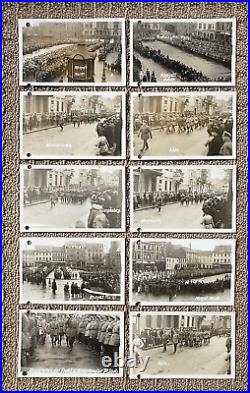
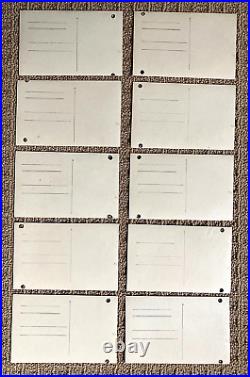
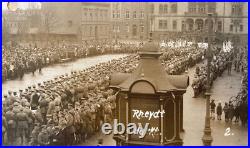
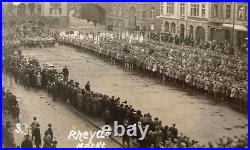
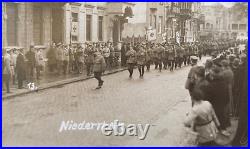
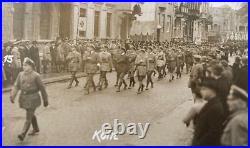
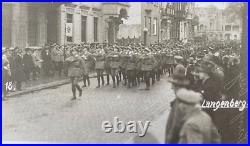
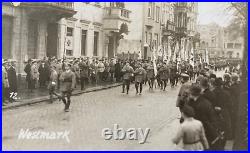
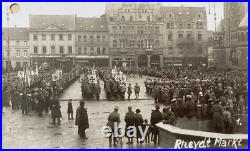

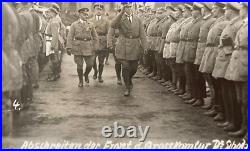

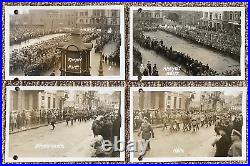
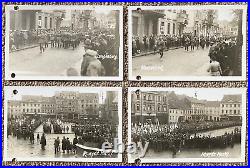


(10) POST WW1 STAHLHELM RALLY MARKTPLATZ RHEYDT MÖNCHENGLADBACH GERMANY RPPC PHOTO POSTCARDS c1923. (10) STAHLHELM RALLY MARKTPLATZ RHEYDT MÖNCHENGLADBACH GERMANY RPPC PHOTO POSTCARDS. (PARTIAL SET) OF RPPC’S ARE HAND CAPTIONED AND NUMBERED IN THE NEGATIVE. Abschreiten der Front d. Walking along the front d. Der Stahlhelm, Bund Der Frontsoldaten (German,’The Steel Helmet, League Of Front-Line Soldiers’), Known As Der Stahlhelm’The Steel Helmet’, Was A German WW1 Veteran’s Organization Existing From 1918 To 1935. It Was Part Of The ” Black Reichswehr ” And In The Later Days Of The German Weimar Republic Operated As A Paramilitary And Placed At Political Party Gatherings As Armed Security Guards. CONDITIONS ARE EXTREMELY FINE WITH PERIOD FILE HOLES ON THE FRONT LEFT OF EACH. SHARP FOCUS WITH VERY GOOD CONTRAST ON EACH. THESE ARE NOT REPRODUCTIONS OR COPIES.



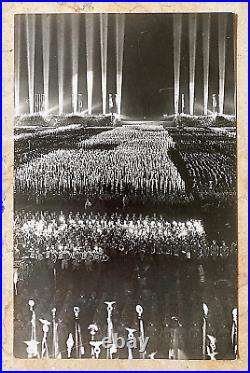
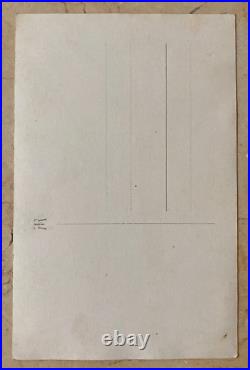



PRE-WW2 GERMAN NUREMBERG 1936 RALLY CATHEDRAL of LIGHT – PHOTO POSTCARD RPPC. AT THE LUITPOLD ARENA NUREMBERG GERMANY DURING THE MAIN EVENING CALLED. CATHEDRAL OF LIGHT IN 1936. PHOTOGRAPHER’S LOGO ON THE REVERSE. THIS MASSIVE RALLY AT THE. LUITPOLD ARENA IN NURMBERG GERMANY WAS HELD SEPTEMBER 8-14,1936. The single most dramatic moment of the NS rallies. Was not a military parade or a political speech but the Cathedral of Light… SHARP FOCUS AND VERY GOOD CONTRAST. THIS IS NOT A REPRODUCTION OR A COPY.



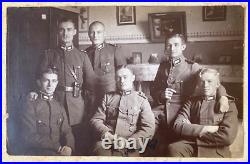
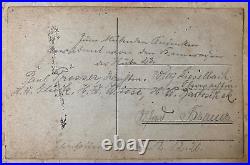

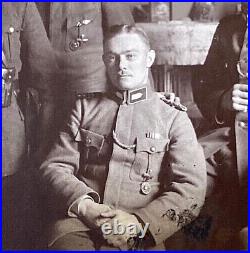
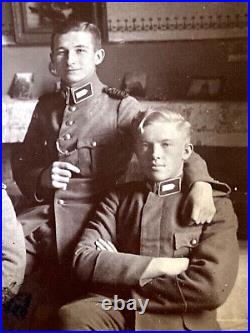

POST-WW1 GERMAN GARDE KAVALLERIE SCHUTZEN DIVISION 1920 ID’d PHOTO POSTCARD RPPC. POST-WW1 GERMAN GARDE, KAVALLERIE, SCHUTZEN, DIVISION 1920 G. SIX POST-WW1 GERMAN ” G ARDE, K AVALLERIE, S CHUTZEN, D IVISION ” G. OFFICERS FROM CHARLOTTENBURG (BERLIN) POSE IN THEIR REICHSWEHR UNIFORMS WITH VARIOUS BADGES. Ie; BALTIC CROSSES, WW1 WOUND BADGES, MARKSMANSHIP LANYARDS, IRON CROSS RIBBON AND RIBBON BAR. EACH SITTER IS PERIOD ID’d ON THE REVERSE. IN OLD GERMAN SCRIPT AND DATED. VERY SHARP FOCUS WITH VERY GOOD CONTRAST. THIS IS NOT A REPRODUCTION OR A COPY.


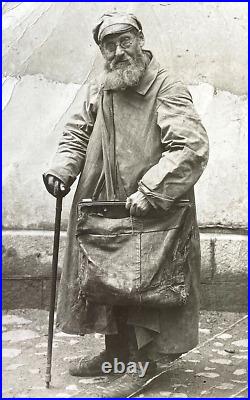
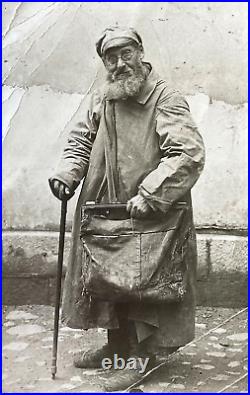
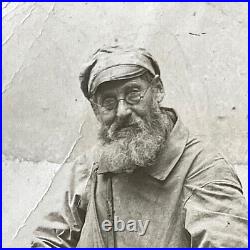
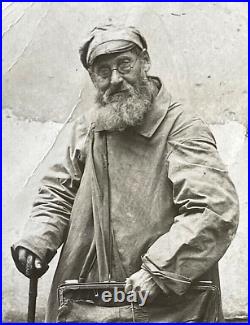
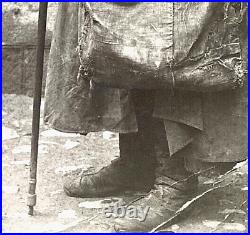
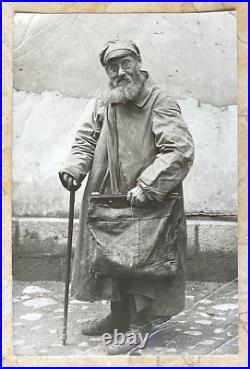
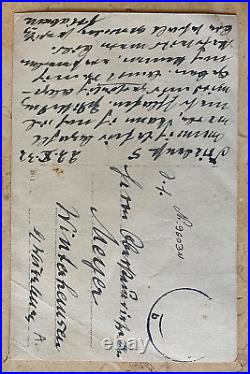
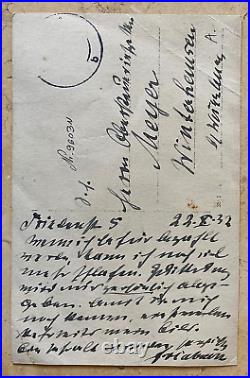

POST-WW1 GERMAN MAN DURING “THE GREAT DEPRESSION” 1932 PHOTO POSTCARD RPPC. POST-WW1 GERMAN CITIZEN DURING THE ” GREAT DEPRESSION ” IN LATE 1932 STOPS ON THE STREET IN FRANKFURT HOPING FOR A HANDOUT. In October of 1929, a worldwide depression began. A depression is a severe economic downturn that forced businesses to decrease production and lay off workers. Germany felt the effects of the depression almost immediately. By 1932, 6 million Germans were unemployed in a nation of about 60 million people, lighting the way. Towards World War 2. PERIOD HAND WRITTEN UNTRANSLATED CONTENT WITH LOCATION AND DATE IN OLD GERMAN SCRIPT. FRANKFURT OCTOBER 22,1932. POSTAL REGISTRATION NUMBERED #9603N. VERY SHARP FOCUS WITH VERY GOOD CONTRAST. THIS IS NOT A REPRODUCTION OR A COPY.


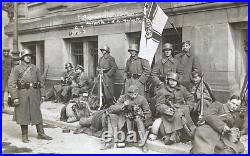



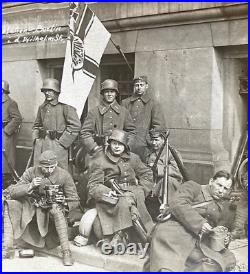
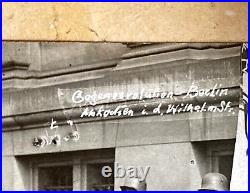
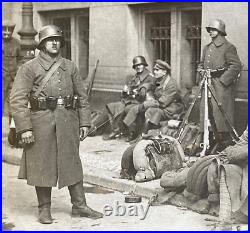


POST-WW1 GERMAN KAPP PUTSCH FREIKORPS in BERLIN 1920 PHOTO POSTCARD RPPC. POST-WW1 GERMAN KAPP PUTSCH FREIKORPS in BERLIN 1920. FULLY ARMED POST-WW1 GERMAN KAPP PUTSCH FREIKORPS MEMBERS OF THE MARINE BRIGADE EHRHARDT ARE SEEN WITH THE IMPERIAL NAVY FLAG ON THE STREETS OF BERLIN DURING THE KAPP-PUTSCH in BERLIN MARCH 1920. Was an attempted coup against the German national government in Berlin on 13 March 1920 that lasted 5 days. Also known as the. Was a Freikorps unit of the early Weimar Republic. It was formed on 17 February 1919 as the Second Marine Brigade from sailors (Matrosen) of the former Imperial German Navy under the leadership of Hermann Ehrhardt. The Brigade was used primarily in the suppression of the Bavarian Soviet Republic and the First Silesian Uprising, both in the first half of 1919. In March 1920, faced with its imminent disbanding by orders of the government in Berlin, the Marine Brigade was one of the main supporters of the Kapp Putsch that tried to overthrow the Weimar Republic. TITLED IN THE LOWER NEGATIVE. VERY SHARP FOCUS WITH VERY GOOD CONTRAST. THIS IS NOT A REPRODUCTION OR A COPY.


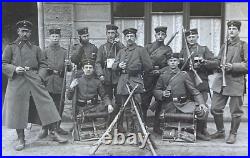
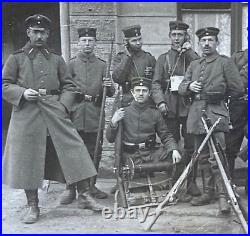
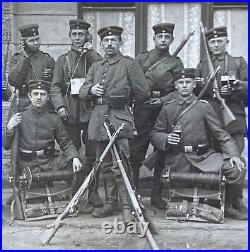
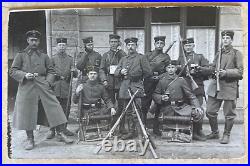
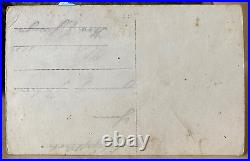
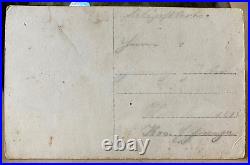

POST-WW1 GERMAN KAPP PUTSCH FREIKORPS TELEPHONES BERLIN 1920 PHOTO POSTCARD RPPC. POST-WW1 GERMAN KAPP PUTSCH FREIKORPS w/ TELEPHONES BERLIN 1920 PHOTO POSTCARD RPPC. ARMED POST-WW1 GERMAN KAPP PUTSCH FREIKORPS MEMBERS OF THE MARINE BRIGADE EHRHARDT ARE SEEN WITH TELEPHONE CABLE LAYER BACKPACKS, TELEPHONE HANDSETS AND A CABLE WIRE POLE HAND TOOL ON THE STREETS OF BERLIN DURING THE KAPP-PUTSCH in BERLIN MARCH 1919. PARTIAL TRANSLATED PERIOD HAND ID’D ON THE REVERSE IN OLD GERMAN SCRIPT. – – isangn. Was an attempted coup against the German national government in Berlin on 13 March 1920 that lasted 5 days. Also known as the. Was a Freikorps unit of the early Weimar Republic. It was formed on 17 February 1919 as the Second Marine Brigade from sailors (Matrosen) of the former Imperial German Navy under the leadership of Hermann Ehrhardt. The Brigade was used primarily in the suppression of the Bavarian Soviet Republic and the First Silesian Uprising, both in the first half of 1919. In March 1920, faced with its imminent disbanding by orders of the government in Berlin, the Marine Brigade was one of the main supporters of the Kapp Putsch that tried to overthrow the Weimar Republic. VERY SHARP FOCUS WITH VERY GOOD CONTRAST. THIS IS NOT A REPRODUCTION OR A COPY.


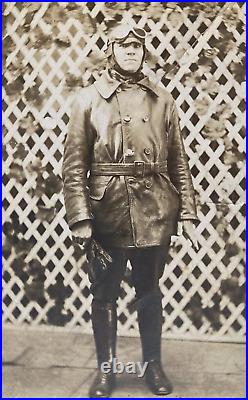
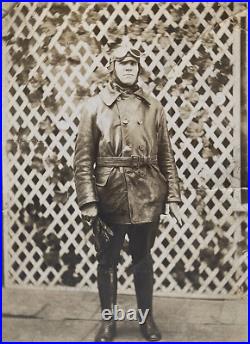
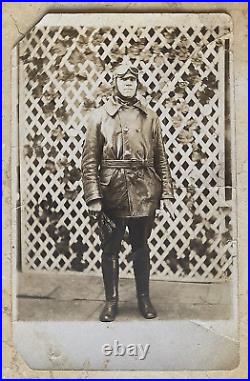
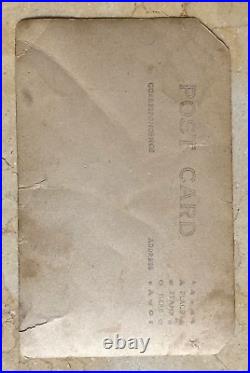

WW1 US MARINE CORPS AVIATION AVIATOR IN FLIGHT SUIT (HAITI) 1918 PHOTO POSTCARD RPPC. WW1 US MARINE CORPS AVIATOR IN FLIGHT SUIT (HAITI) 1918 PHOTO POSTCARD RPPC. WW1 ERA US MARINE CORPS AVIATOR WEARS HIS FULL LEATHER FLIGHT SUIT THAT INCLUDES HIS LEATHER FLIGHT COAT, GOOGLES, FLIGHT CAP, GLOVES. MARINE CORPS AVIATOR PHOTO POSTCARD WAS PART OF A GROUP OF PHOTO POSTCARDS RELATED TO THE U. MARINE CORPS OCCUPATION OF HAITI OF 1915 THROUGH THE EYES OF U. MARINE CORPS AVIATION THAT I CURRENTLY HAVE LISTED. In the September 1915 occupation of Haiti 2,500 Marines. Initially led by Major Smedley D. Were equipped with airplanes, cars and trucks. Five airfields were constructed and at least three airplanes were present in Haiti at the time. They helped innovate the tactics employed during World War I but were not well suited to the Haiti intervention and later occupation. The Marines withdrew from Haiti, including aviation, in 1934. SHARP FOCUS WITH VERY GOOD CONTRAST. THIS IS NOT A COPY OR A REPRODUCTION.


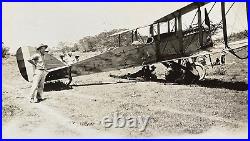
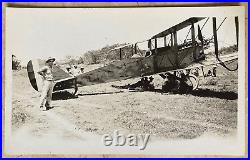

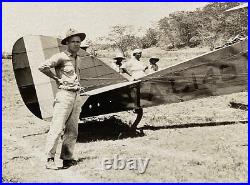
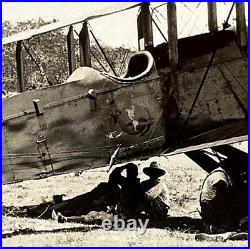
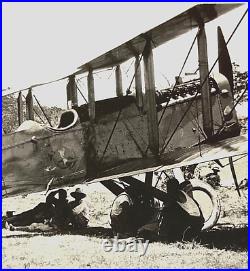

WW1 US MARINE CORPS AVIATION DH4 BOMBER IN HAITI 1918 PHOTO POSTCARD RPPC. WW1 ERA US MARINE CORPS AVIATION DH4 BOMBER IN HAITI 1918 PHOTO POSTCARD RPPC. WW1 ERA US MARINE CORPS AVIATOR WITH EGA ON HIS CAMPAIGN HAT POSES BY HIS SINGLE SEATER US MARINE CORPS DH4 BOMBER IN HAITI WITH THE REGISTRATION NUMBER A-6149 AND A LARGE US MARINE CORPS AVIATION EGA ON THE SIDE ON THE COCKPIT. DURING THE HEAT OF THE DAY HAITIAN PEOPLE TAKE COVER UNDER THE WINGS. In the September 1915 occupation of Haiti 2,500 Marines. Initially led by Major Smedley D. Were equipped with airplanes, cars and trucks. Five airfields were constructed and at least three airplanes were present in Haiti at the time. They helped innovate the tactics employed during World War I but were not well suited to the Haiti intervention and later occupation. The Marines withdrew from Haiti, including aviation, in 1934. SHARP FOCUS WITH VERY GOOD CONTRAST. THIS IS NOT A COPY OR A REPRODUCTION.


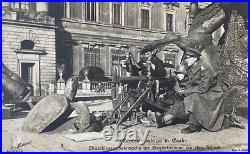
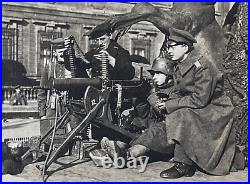
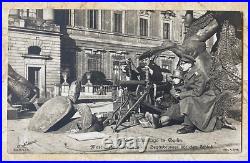
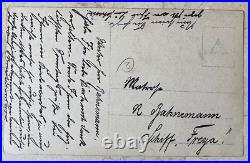


MACHINE GUN NOISE AT THE BEGAS FOUNTAIN IN FRONT OF THE CASTLE. TITLED IN THE LOWER NEGATIVE.


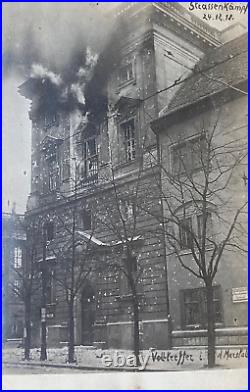

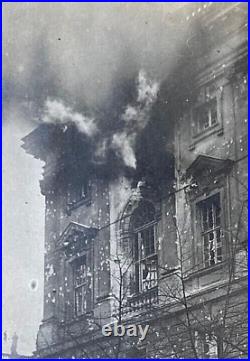
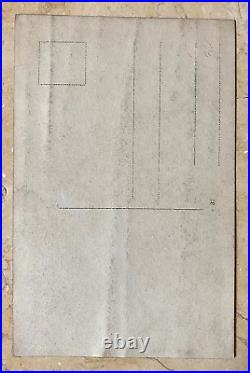
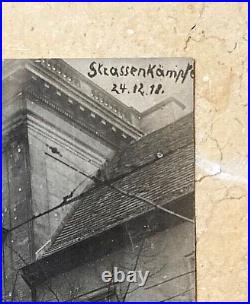

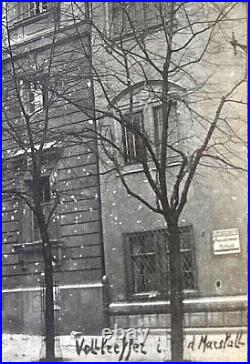

Volltreffer i d Marstall. (Direct hit in the stables). PERIOD HAND OPAQUED CAPTION IN THE UPPER AND LOWER RIGHT OF THE NEGATIVE THIS IS NOT A REPRODUCTION OR A COPY.
















































































